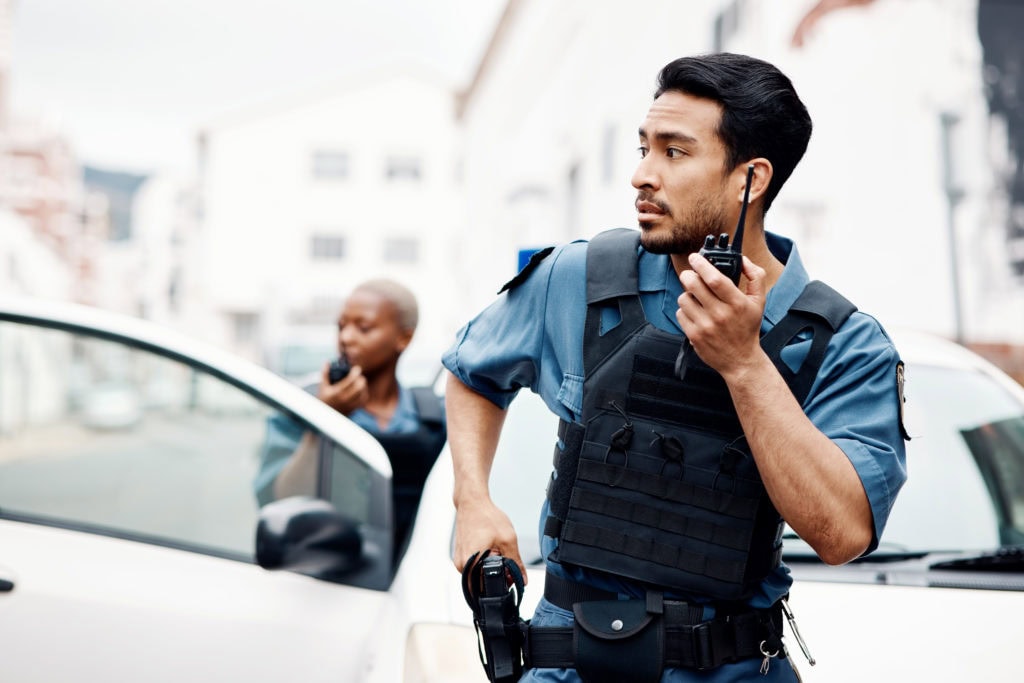Top Rated Criminal Lawyers | Call Us 24/7 AT (416) 658-1818

As of 2012, motor vehicle drivers in Ontario face a hefty fine of $155 if caught using a mobile phone while behind the wheel. In response to this, several Police divisions across the province have initiated “Ride Safe” programs with the intention of nabbing distracted drivers.
Making headlines among these initiatives is a controversial surveillance tactic pioneered by Peel Regional Police as part of a “safety blitz” initiative. The tactic involves uniformed police officers utilizing public transit buses to trap drivers using hand-held devices. While an unsuspecting driver may attempt to be as inconspicuous as possible when using their handheld device, the surveillance tactic is potentially very effective. If a “talk” or “text” driver is spotted, a traffic officer is notified to pull the driver over.
It should be noted that a driver may deny the allegations and maintain that they were not engaged in the prohibited activity. However, the officers come fully equipped with cameras and digital devices that allow for the capture of pictures and video footage. A discussion surrounding the appropriacy of these measures is currently a matter of serious debate.
The police present the argument that these intrusive measures are imperative and vindicated based on public safety. They argue that distracted drivers impose a significant risk on the roadway and are primary contributors to traffic accidents.
These concerns are met with vehement opposition from the public. A strongly voiced dissent arises from the public, indicating a clash of viewpoints.
Most civilians maintain a reasonable expectation of privacy while travelling in their vehicles. An expectation that invokes quite a stir when thought back to the time when the concept of a “Big Brother '' type operation caused a controversy. This was the time when the Toronto Police were campaigning for the use of CCTV (Closed Circuit Television) in public places; a highly controversial move, leading many to question whether such an intrusion could be considered valid.
The issue at stake was whether the use of cell phones in automobiles created such a traffic safety concern that it warranted the police videotaping the interior of a motorist’s vehicle.
Several factors were in play which could potentially affect the reliability of this type of surveillance evidence. Especially during peak rush hour traffic, surveillance efforts could face difficulties. It is conceivable that police officers might not be able to capture clear and unobstructed photos. Similarly, a different object could potentially be mistaken for a handheld device by police personnel. The importance of respecting the privacy and autonomy rights of civilians cannot be overstated. So it is crucial for motorists to be aware of their rights.
In addition to the aforementioned points, there are other considerations to take into account. For instance, a scenario might arise where a police officer, on the lookout for distracted drivers, might observe contraband or other suspicious material in passing vehicles.
In such a situation, the question arises - would there be reasonable grounds for the officer to stop and search the vehicle?
There are also situations where exigency may play a role. There may exist situations necessitating immediate police intervention. This brings us to another question - what are the limits of our expectation of privacy inside a motor vehicle? To what extent can we forsake our privacy for the safety of the general public?
The ongoing debate then leads us to questions surrounding expanded police surveillance. Should our cars be equipped with video cameras to facilitate more stringent police surveillance?
Are measures like having our speedometers wired into police computers to safeguard against speeding motorists justifiable?
This discussion emphasizes the importance of knowing your rights. If you find yourself charged with a criminal offence, reach out to Kostman and Pyzer, Barristers, for a free consultation today!
The use of covert surveillance tactics by police to catch distracted drivers, including the controversial "Ride Safe" programs, raises important questions about privacy, safety, and the role of law enforcement.
If you are facing charges related to distracted driving or any other criminal offence, it is essential to understand your rights and legal options. Contact our experienced Toronto criminal defence lawyers at Pyzer Criminal Lawyers today. We can provide expert legal guidance and help you navigate the complexities of your case.